Overwhelmed and isolated: Dog flu outbreak causes crowding, boost in euthanasia at OKC shelter
The barking of restless dogs echoes through the rows of quarantined kennels of Oklahoma City's animal shelter.
The dogs can't leave their 4-by-8 kennel, often shared with another dog, or be touched by staff members for fear of spreading the extremely contagious canine influenza, which found its way to Oklahoma City and the state this year.
"Kennel stress is a real possibility while they're here," said head veterinarian Dr. Allison Haley, referring to the mental and emotional strain on a pup, which can manifest in different ways, including aggression, fear, anxiety, shaking, whining and others.
The shelter has been closed since early June, having been open less than a month after closing in March due to outbreaks of the same illness.
Because of the closures and sickness, it's been harder to adopt out dogs, and the shelter is 154% over capacity. The consequence of this overcrowding is more frequent euthanasia for space.
What is dog flu and should Oklahoma pet owners be concerned?
Oklahoma City Animal Welfare Superintendent Jon Gary said he hopes to reopen the shelter July 21, as long as there are no more outbreaks. When the shelter does reopen, it will be for adoptions the first three days "in an effort to get kennel inventory down to a manageable level before starting intake again," Gary said.
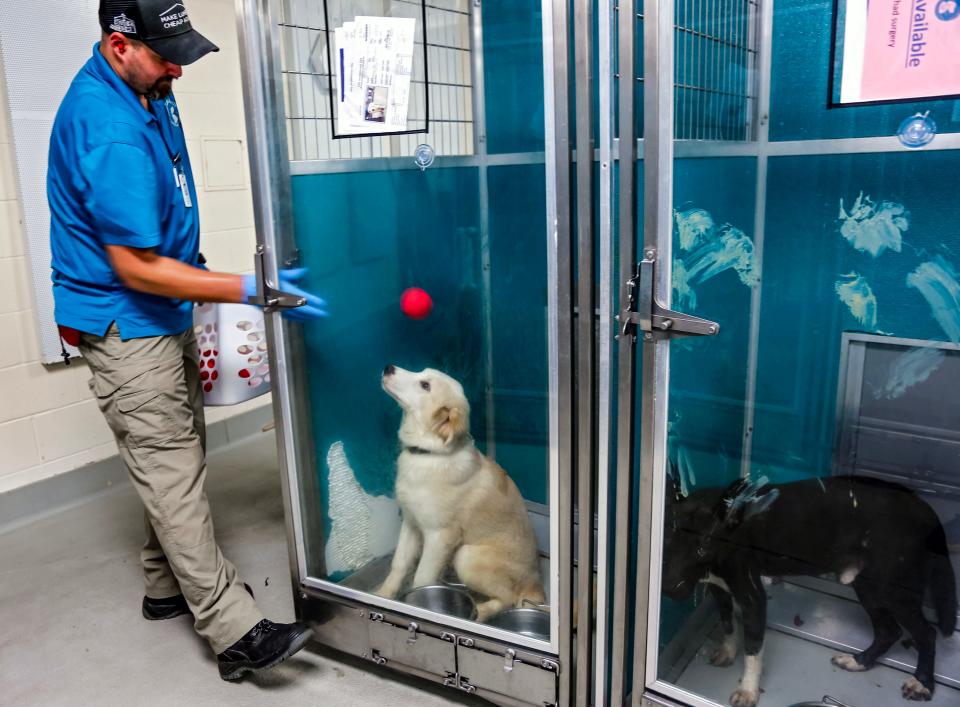
To avoid further spread of the disease, each kennel room is its own quarantine area. Staffers that are assigned to work one area cannot enter another without changing clothes.
Every time a new case pops up, the entire room goes back into quarantine for 21 days, long enough for the virus to go through a dog's system.
"In order to keep all of these areas separate, our staff is having to be very, very careful where they go and what they do," said animal welfare supervisor Brienne Grayson. "We don't want any cross contamination. ... You could essentially go into one room, get some of it on you and carry it into the next room."
In addition to the quarantined kennels, there is one "clean" room for dogs that have newly entered the shelter and haven't been exposed to the flu. These dogs can be adopted once they've been medically cleared and spayed or neutered.
More: Adopt a pet: Meet Hunter, Aspen, Cora, Willow and others at the OKC-area shelters

'We have zero immunity to the disease'
While the current outbreak isn't as deadly as the flu and strep zoo that spread this spring, killing five dogs, it's still extremely contagious, Haley said. And the dogs most susceptible to getting deathly sick are those that are very young or very old.
"If a dog is exposed to it, they're pretty much gonna get it because we have zero immunity to the disease," Gary said.
A vaccine has been on backorder for months and doesn't make sense for the shelter environment, Gary said. But once it becomes more readily available, he expects Oklahoma veterinarians will make it part of their yearly vaccine regiments.
There have been no reported cases of a human becoming infected with the dog flu, but there have been cases reported where an infected dog spread the illness to a cat, according to the CDC.

The vaccine requires a booster after two weeks, and immunity doesn't kick in for another few weeks after that. In the shelter during a time of outbreaks, the likelihood of exposure before that immunity takes effect is pretty high, he said.
"As crazy as it sounds, we are building immunity through exposure," Gary said. "And frankly, that's part of what's going to happen in our entire community."
Extended kennel time leads to daily enrichment for OKC shelter dogs
The red balls filled with treats and the lavender "de-stress" fragrance, along with Billy Joel coming through the intercom system, broke up the mundaneness of the day for the pups stuck in their kennels.
A lack of sensory stimulation could be harmful, so staff is doing everything they can to keep the dogs' stress levels down.
Afternoon enrichment has become a daily treat, ranging anywhere from a toy, a fragrant spray, music over the intercom system, flashing lights or a special food item.
"We've had consistent enrichment, but not for all dogs," Haley said. "And so now we're trying to put it in place for it to be something that's just part of the daily (routine)."
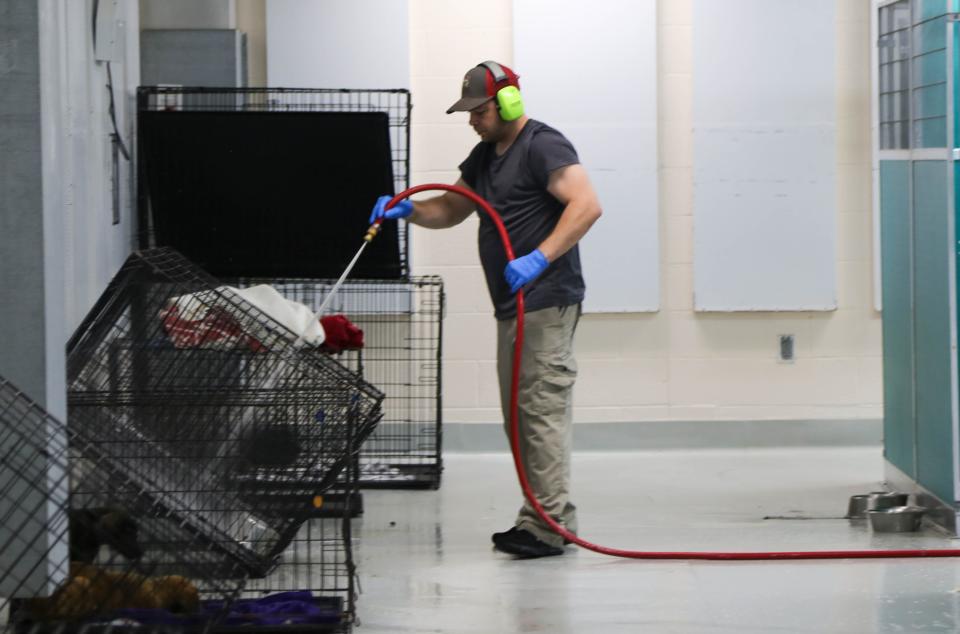
There are several dogs who have been at the shelter since before the first flu outbreak. In kennel 459 are Mr. Charles Barkley and Alford the Akita, who were adopted after the shelter reopened in May but were returned and are now going through their second closure.
There's another in 203, which doesn't have a name yet, who came in as a puppy and is a favorite of Haley's to watch come out of her shell despite her only interactions being through the kennel glass.
"We get to know the personalities of these kiddos because they've been in the same kennel," Haley said.
With late nights and hard decisions, shelter staff 'doing our best'
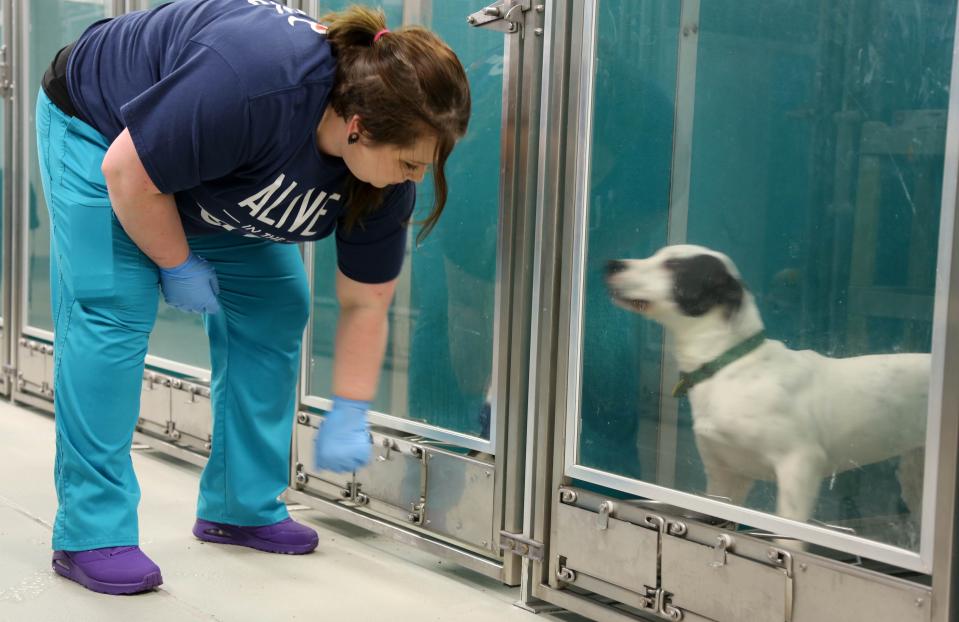
Tanisha Reed went through multiple sets of gloves as she passed out afternoon medications. Every time she accidentally makes contact with a dog, she has to put on a new pair.
This inability to interact takes a toll on staffers who love animals enough to want to care for them every day and love to get to know animals' personalities.
But facing challenges is nothing new for animal welfare staff, said Grayson, who continuously fosters injured cats and is able to bring them to work with her.
"We never know what's going to walk in our doors, and we never really know what each day is going to hold," the shelter supervisor said. "So facing the challenges of being closed ... everyone has a really important role to play. And we are definitely doing our best to make it happen."
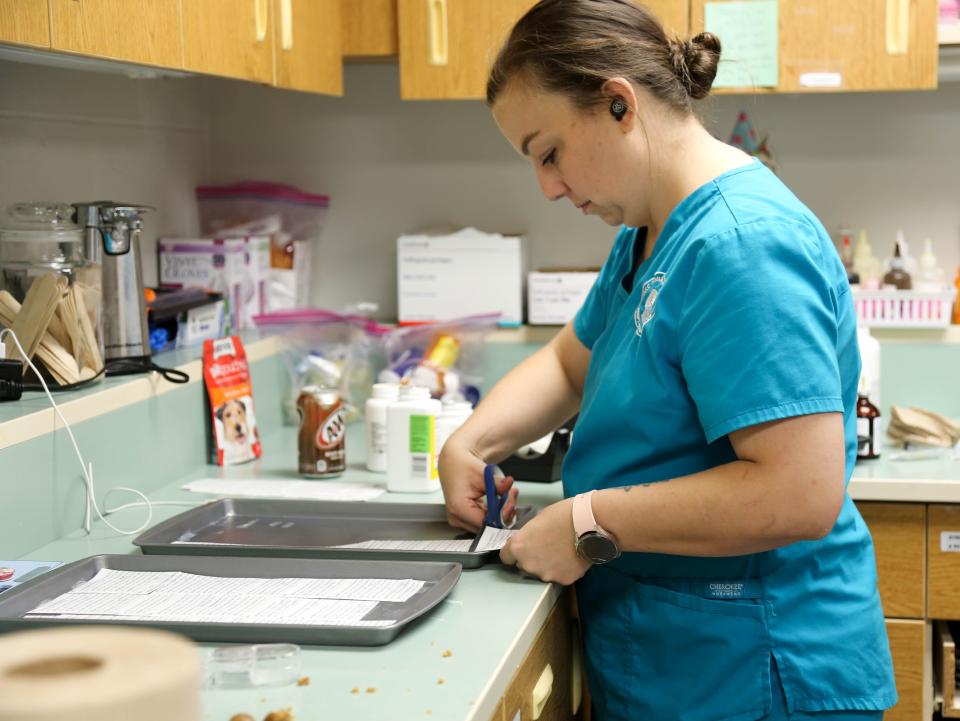
Far fewer dogs have been adopted during this time — foster dogs have been adoptable throughout the closures — simply due to so many being sick or exposed and in quarantine. There were 455 dogs at the shelter as of Friday, compared to the maximum capacity of 297. Foster dogs have been adoptable throughout the closures.
Euthanizing for space is a last resort, but has become more frequent, Gary said. Just Thursday, the shelter shared pictures of adoptable dogs on Facebook to promote the fact that it needed eight of them to find homes to avoid euthanizing others who aren't ready to leave the shelter.
"(I've spent) so many late nights with drawings of the kennel rooms to see where I've got space ... in an effort to save the most animals," Haley said.
Current shelter not 'designed for life saving' with its low capacity
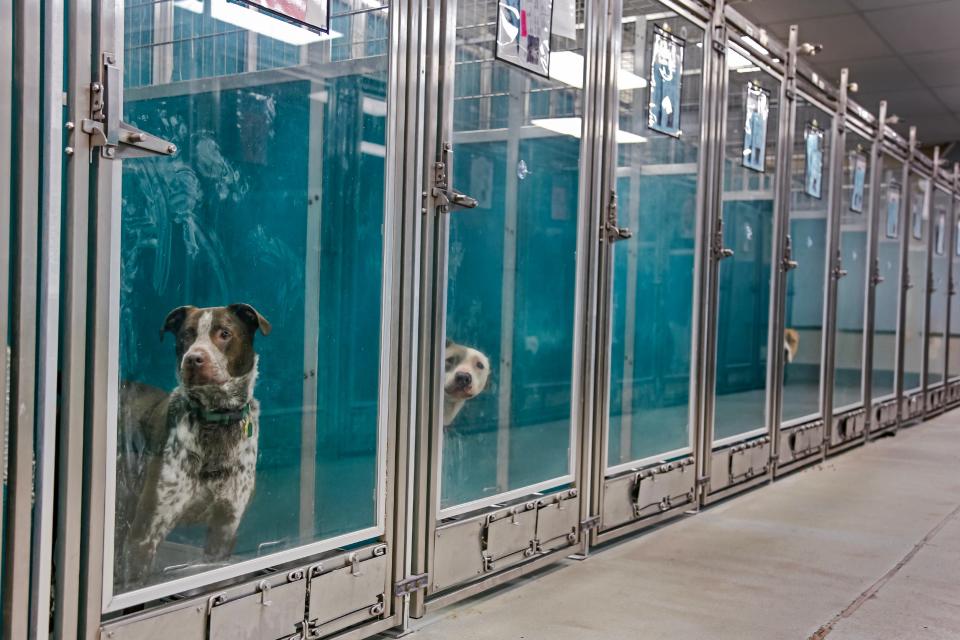
Operating over-capacity is not out of the norm. In the summer of 2021, there were 478 dogs.
"The number of stray animals within city limits is very, very high," Grayson said. "So that keeps the shelter pretty much overcapacity at all times."
But the city and voters have acknowledged that's not sustainable. MAPS 4 will fund a new shelter, scheduled tentatively to begin construction in late 2024.
The new shelter will have more and bigger kennels, bringing OKC closer to its goal of achieving a "no-kill" status, with at least 92% of animals leaving alive. Terminally ill dogs or those posing a risk to public safety would still be euthanized. The live release rate for dogs in 2023 is hovering about 75%, according to the report cards posted daily to OKC Animal Welfare's Facebook.
The current shelter "wasn't designed for life saving," Gary told The Oklahoman in 2019.
"At that time, the animals were brought in, held for three days and the vast majority were euthanized," he said. "The percentage that left back then was about 15%.”
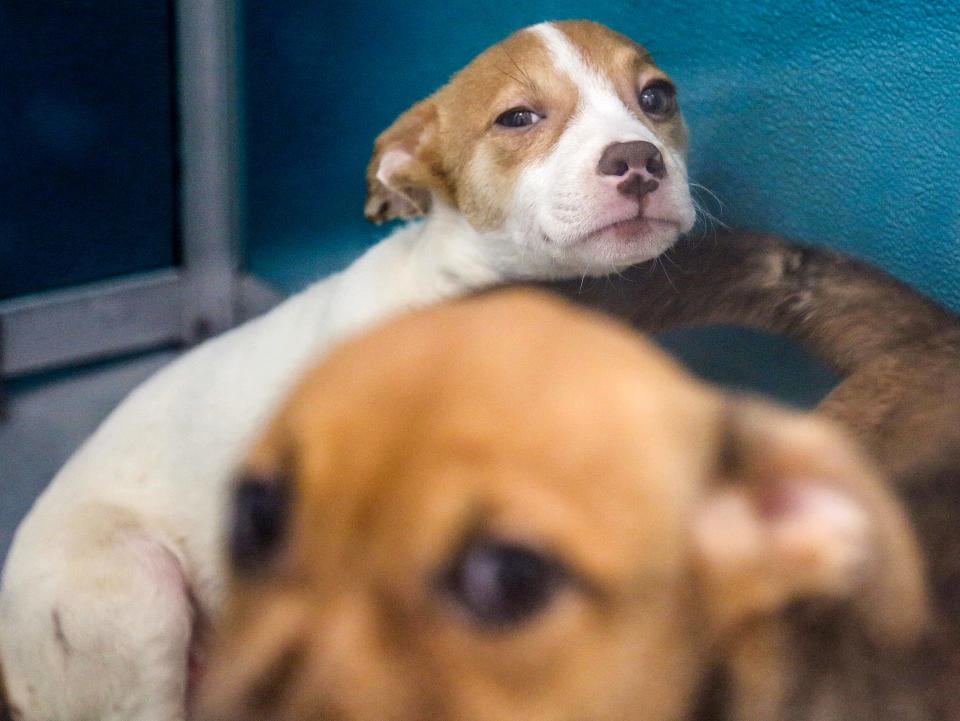
How the community can help OKC Animal Welfare
One of the biggest needs the shelter has is more volunteers.
"There's tons to do all the time and not enough people to do it," said clinic supervisor Tanisha Reed.
Volunteers can do anything from walking the dogs to taking donation inventory, or kennel cleaning to enrichment activities. A full list of volunteer jobs is available on the shelter's website.
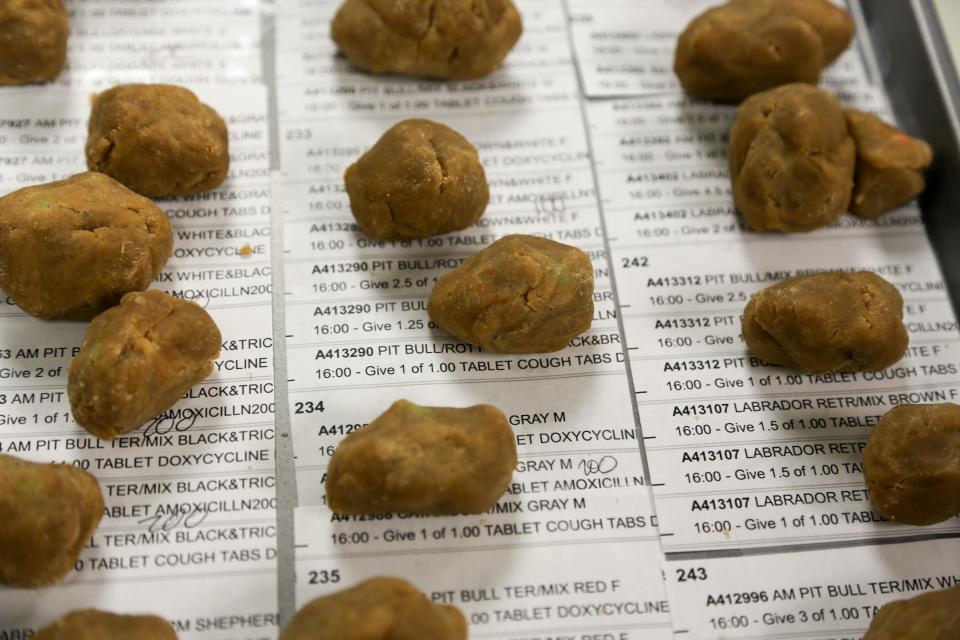
The shelter also has an Amazon wish list for donations, or donations can be dropped off at the front door.
Foster families also are needed to save more lives. Right now there are about 500 to 600 animals in foster homes, Grayson said.
To make an animal part of your family, check out the adoptable cats and dogs online. Then, head to the shelter between 9 a.m. and 5 p.m., call the phone number listed on the door and provide the animal's number you're interested in taking home.
This article originally appeared on Oklahoman: OKC animal shelter beyond full as repeated dog flu outbreaks take toll

